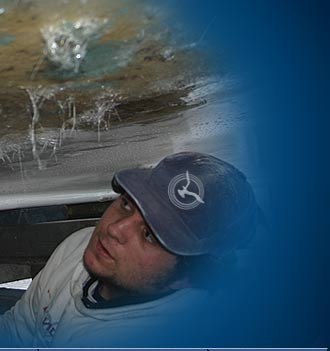



Gel Coat Repairs



Since 1979, Cap Sante Marine
has been leading the way in northwest fiberglass and gel
coat repairs. Whether your
boat needs a touch-up or a
major repair, you will find
our years of experience
will help make your gel
coat repair project turn out
beautifully. With all of the
choices in gel coats, and
gel coat colors available
today, trust Cap Sante
Marine to finish your
job with perfection.


Surface scratches in your gelcoat can be buffed out with polishing compound, but deep scratches must be filled.
Gelcoat is available as both a resin and in a thicker putty form called paste. For the smaller repairs, paste is a good choice. For repairing several scratches, wiping each scratch with styrene just prior to filling it partially reactivates the old gelcoat, resulting in some chemical bonding between the old gelcoat and the new. The hardest part of a repair to the surface of a fiberglass boat is matching the color. Professionals who do gelcoat repairs daily still have difficulty getting a perfect match. Even "factory" colors don't match exactly after a boat has been in the sun for a few years.
The hardener for gelcoat is the same as for any polyester resin-methyl ethyl ketone peroxide, or MEKP. Gelcoat resin usually requires 1 to 2 percent of hardener by volume (follow the manufacturer's instructions). You must be certain to stir in the hardener thoroughly. If you fail to catalyze every bit of the resin, parts of the repair will be undercured. Gelcoat will not fully cure in air. To seal the surface of a scratch repair, cover it with a sheet of plastic film. Tape one edge of the plastic to the surface just beyond the repair, then smooth the plastic onto the gelcoat and tape down the remaining sides.
After 24 hours, peel away the plastic. The amount of sanding required will depend on how smoothly you applied the gelcoat.
When sanding, use short strokes, taking care that the paper is sanding only the patch. Never do this initial sanding without a block.
When the new gelcoat is flush, put 220-grit wet-or-dry paper on your block and wet sand. Use a circular motion and keep a trickle of water running on the sanding area. Feather the repair into the old gelcoat until your fingertips cannot detect a ridge. Finish with 400-grit wet-or-dry paper. Wet sand the surface until the repair area is uniform and repeat with 600-grit. Be sure to wear gloves to save the tips of your fingers. Finish it off with rubbing compound and a fresh coat of wax. If your color match is reasonably good, the repair will be virtually undetectable.